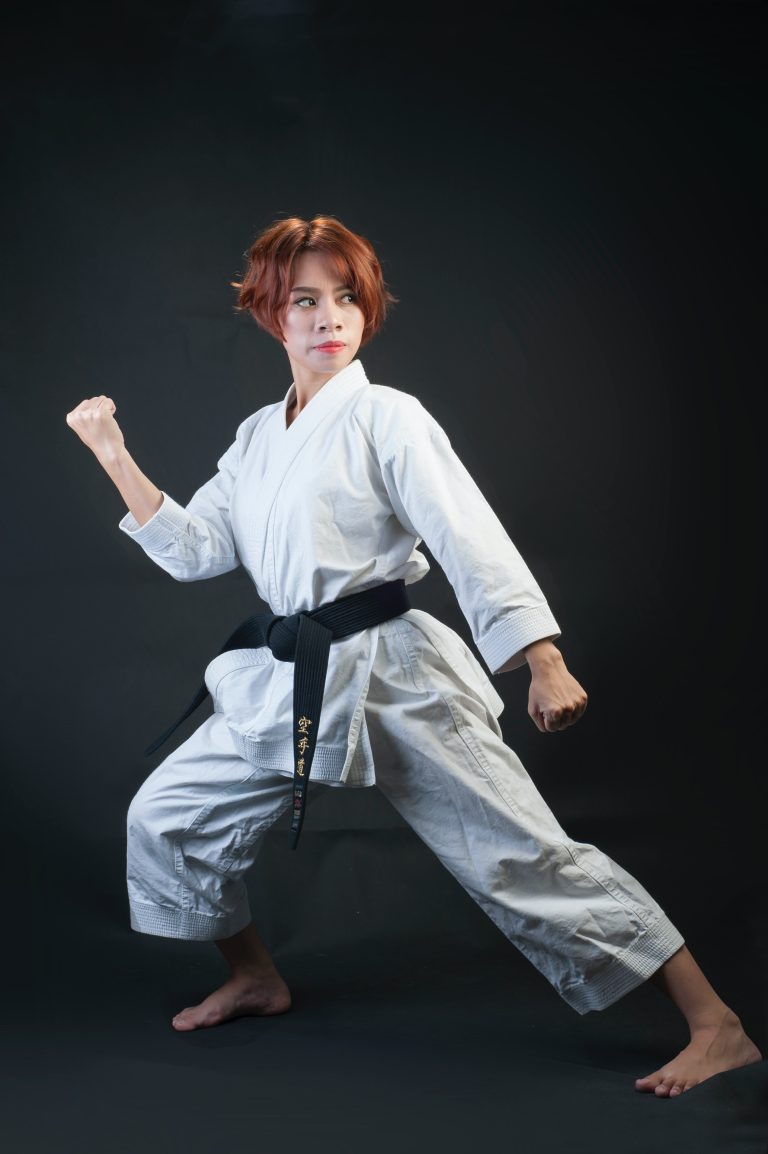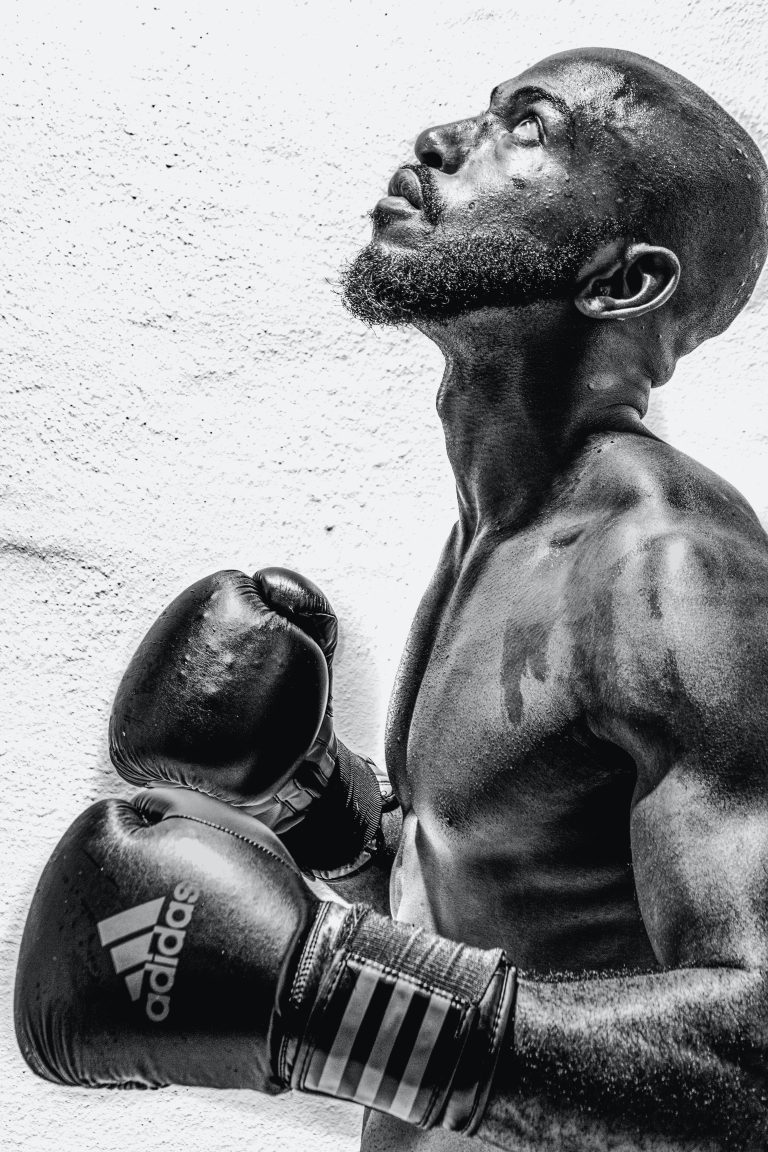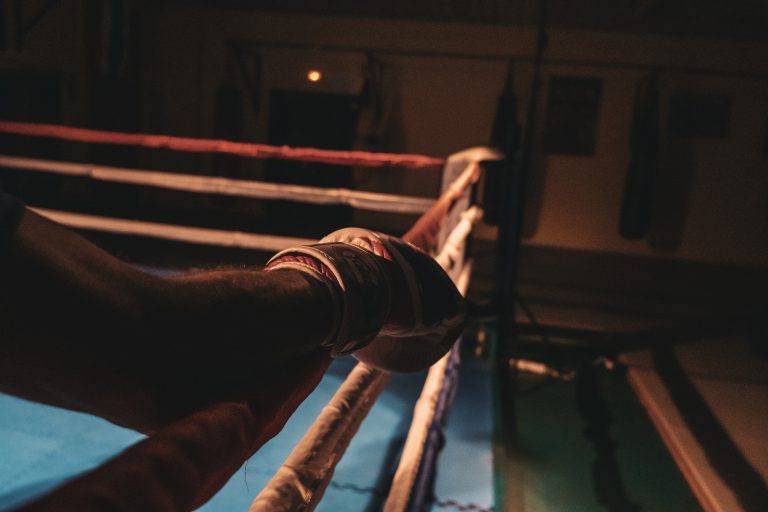How to do Karate at Home: A Step-by-Step Guide
Karate is a popular martial art that originated in Japan. Learning karate can help you develop discipline, focus, and physical fitness. However, not everyone has the time or resources to join a karate dojo. The good news is that you can learn karate at home. In this guide, we’ll walk you through the essential steps to help you start your karate journey.
Step 1. Choose the Right Space
The first step to practicing karate at home is to find a suitable space. Ideally, you should look for a room with a flat surface and enough space to move around freely. Make sure the room is well-lit and has enough ventilation to keep you comfortable during your practice.
Step 2. Wear the Proper Clothing
Karate requires comfortable and flexible clothing that allows you to move freely. The traditional karate uniform is called a gi, which consists of a jacket, pants, and a belt. However, if you don’t have a gi, you can wear loose-fitting clothing such as sweatpants and a T-shirt.
Step 3. Learn the Basic Stances
The foundation of karate lies in its stances. Stances are the basic positions that help you maintain balance and stability during your practice. There are several stances in karate, but we’ll cover the three most essential ones:
– The front stance: stand with your feet shoulder-width apart, your left foot forward and your right foot behind, and your knees slightly bent.
– The back stance: stand with your feet shoulder-width apart, your right foot forward and your left foot behind, and your knees slightly bent.
– The horse stance: stand with your feet wider than shoulder-width apart, your toes pointing outward, and your knees bent.
Practice each stance for a few minutes to get comfortable with them.
Step 4. Learn the Basic Techniques
Once you have mastered the stances, it’s time to learn the basic techniques. The five fundamental techniques in karate are:
– The punch: extend your arm straight out while keeping your wrist straight and your elbow slightly bent.
– The block: use your arm or leg to deflect an attack.
– The kick: use your leg to strike your opponent.
– The strike: use your hand to hit your opponent.
– The throw: use your body weight to take your opponent down.
Practice each technique slowly and with control. Make sure you maintain a proper stance and follow through with your strikes and kicks.
Step 5. Practice Kata
Kata is a set of pre-arranged movements that simulate a fight against imaginary opponents. Kata is an essential part of karate as it helps you develop muscle memory, balance, and coordination. There are several kata in karate, each with its own unique set of movements.
Start with a simple kata such as Taikyoku Shodan or Heian Shodan. Break down each movement into smaller steps and practice them until you master them. Once you have learned the basic kata, you can move on to more advanced ones.
Step 6. Find a Virtual Instructor
Learning karate at home can be challenging without a qualified instructor to guide you. One solution is to find a virtual instructor who can provide you with online classes and personalized feedback. Look for reputable karate dojos that offer online classes and have experienced instructors.
Frequently Asked Questions: How to Do Karate at Home
Learning martial arts can be tough, especially if you don’t have access to a gym or a training center. But with the advancement of technology, learning how to do karate at home is now possible. Thanks to lots of resources available online, you can learn techniques, katas, and even sparring moves from the comfort of your own home. In this article, we will be answering some frequently asked questions about how to do karate at home.
1. Is it possible to learn karate at home?
Yes, it is possible to learn karate at home, partly because of the internet. You can find various resources, including video tutorials, guides, and online karate classes. You can also purchase karate training materials, such as DVDs or books. However, it’s essential to note that learning karate at home should come with some caveats:
– You won’t have access to a trainer who can assess and correct your techniques. You also won’t have training partners to improve your sparring skills
– You are accountable for your own progress and motivation
– Training at home requires discipline and a structured program to make learning more systematic
2. What are the benefits of learning karate at home?
Learning karate at home can have several benefits:
– You can customize your workout routine according to your needs and preferences. For instance, if you want to focus on agility or endurance, you can design a program that caters to those goals.
– It’s convenient and cost-effective. You don’t have to spend time commuting or pay pricey gym memberships.
– You can learn at your own pace. Unlike learning in a class, you have the freedom to go back to a particular technique or move and practice it until you feel you’ve mastered it.
3. What do I need to start learning karate at home?
To start learning karate at home, you need the following:
– A clear and spacious area to perform the moves
– Comfortable and loose-fitting clothes, such as a karate gi or sweatpants and a t-shirt
– Water bottles to hydrate
– A mirror to check your techniques and body position
– Training materials, such as books, DVDs, or online resources
4. What are some basic karate techniques that I can learn at home?
Here are some basic karate techniques you can learn at home:
– Stances: Karate employs different stances, such as the front stance, horse stance, and back stance, to generate power and stability.
– Blocks: Karate blocks are used to deflect or deflect an opponent’s attack. Some examples include downward block, upward block, and middle block.
– Kicks: Karate kicks are used to strike an opponent or create distance. Some fundamental kicks include front kick, side kick, and roundhouse kick.
– Punches: Karate punches are used to hit or knock out an opponent. Some examples include the jab, cross, and hook punches.
5. How can I track my progress when learning karate at home?
Tracking your progress is essential to stay motivated and to ensure you’re improving your techniques. Here are some ways to track your progress:
– Record yourself practicing and compare it to earlier recordings or instructional videos to see if there’s an improvement in your technique or form.
– Set specific goals, such as mastering a particular technique or increasing your stamina, and track your progress towards achieving those goals.
– Have a training diary or logbook that documents your improvement, such as the number of push-ups, kicks, or punches you can do in a set time.
How to Do Karate at Home – A Step-by-Step Guide
Introduction
Karate is a traditional Japanese martial art that has become popular all over the world. It promotes fitness, discipline, and self-defense skills. While many people practice karate in a dojo, it is also possible to practice at home. In this guide, we will go over step-by-step instructions on how to do karate at home.
Step 1: Warm-Up
The first step in practicing karate at home is to warm up your body. A proper warm-up will help prevent injury and prepare your muscles for the workout. It is recommended to warm up for at least 10-15 minutes. Here are some exercises you can do to warm up:
– Jumping jacks
– High knees
– Lunges
– Arm circles
– Stretching
Step 2: Learn the Basic Techniques
Before you start practicing karate, it is important to learn the basic techniques. Here are some of the most important karate techniques:
– Punches: There are many different types of punches in karate, such as the straight punch, uppercut, and hook punch. Start by learning the straight punch, as it is the most basic and important punch in karate.
– Kicks: Like punches, there are many different types of kicks in karate. The front kick, side kick, and roundhouse kick are some of the most common. Start by learning the front kick, as it is the easiest and most straightforward kick.
– Blocks: Blocks are used to defend against punches and kicks. The most basic blocks are the high block, middle block, and low block. Start by learning the middle block, as it is the most common block used in karate.
Step 3: Practice the Basics
Once you have learned the basic techniques, it’s time to start practicing. The key to becoming proficient in karate is repetition, so it’s important to practice each technique repeatedly until you have it mastered. Here are some tips for practicing at home:
– Start slow: When you first start practicing, it’s important to take your time and move slowly. This will help you focus on your technique and avoid making mistakes.
– Focus on form: As you practice, focus on maintaining good form. This means keeping your shoulders down, your arms straight, and your hips square.
– Use a mirror: Practicing in front of a mirror can be helpful, as it allows you to see if you are making any mistakes in your technique.
– Practice with a partner: If possible, find a training partner to practice with. This will allow you to practice techniques such as sparring and self-defense.
Step 4: Incorporate Workouts
In addition to practicing karate techniques, it’s important to incorporate workouts into your routine to improve your strength and cardiovascular fitness. Here are some exercises you can do to improve your physical fitness:
– Push-ups
– Sit-ups
– Squats
– Lunges
– Running or jogging
– Jumping rope
Step 5: Join a Virtual Class
If you want to take your karate practice to the next level, consider joining a virtual karate class. Many dojos are now offering classes online, which allows you to practice with a qualified instructor and get feedback on your technique. Joining a class can also help you stay motivated and accountable.
Conclusion
Practicing karate at home can be a great way to improve your fitness, discipline, and self-defense skills. By following the steps outlined in this guide, you can learn the basic techniques, practice them regularly, and improve your physical fitness. Remember to always warm up before practicing and focus on maintaining good form throughout your training. With practice and dedication, you can become proficient in karate and enjoy all the benefits it has to offer.
Inhaltsverzeichnis






